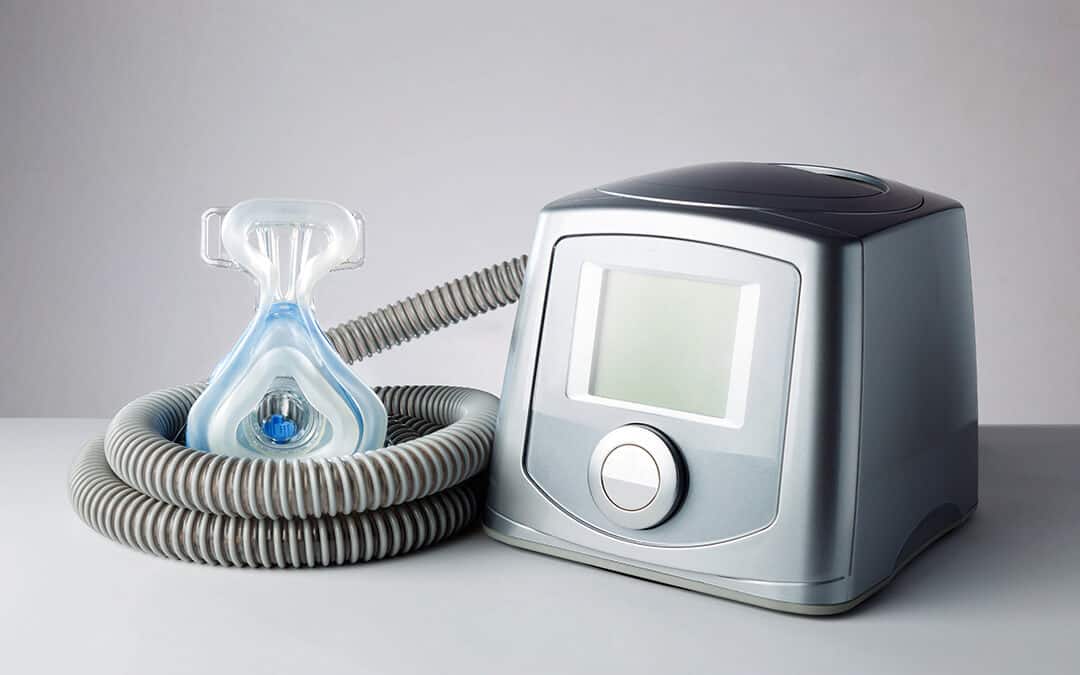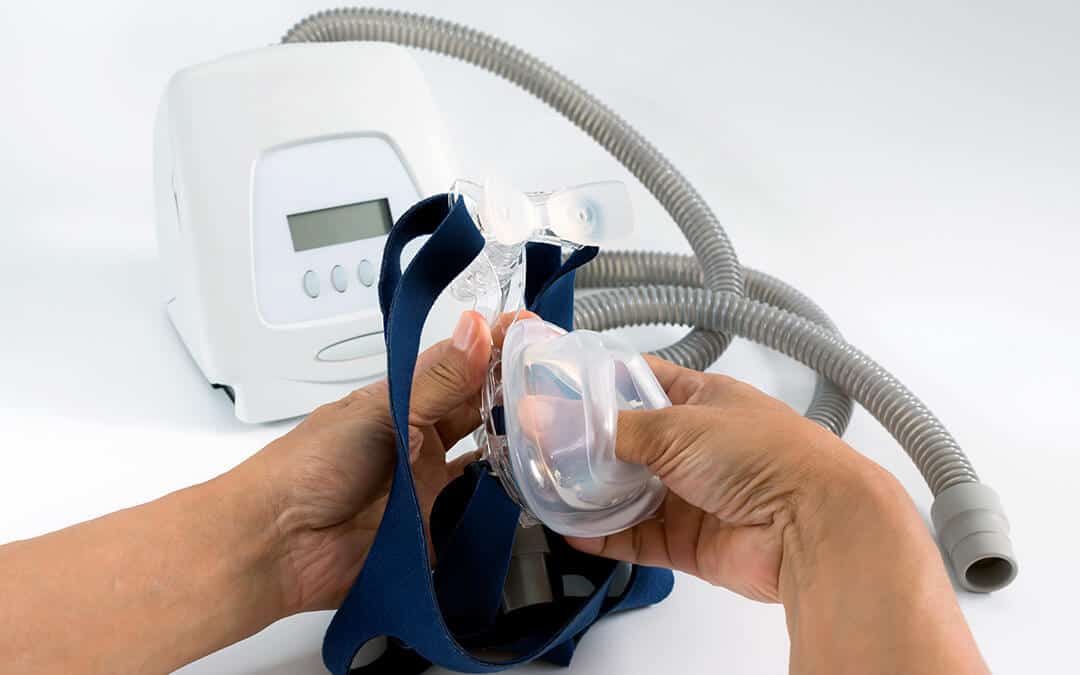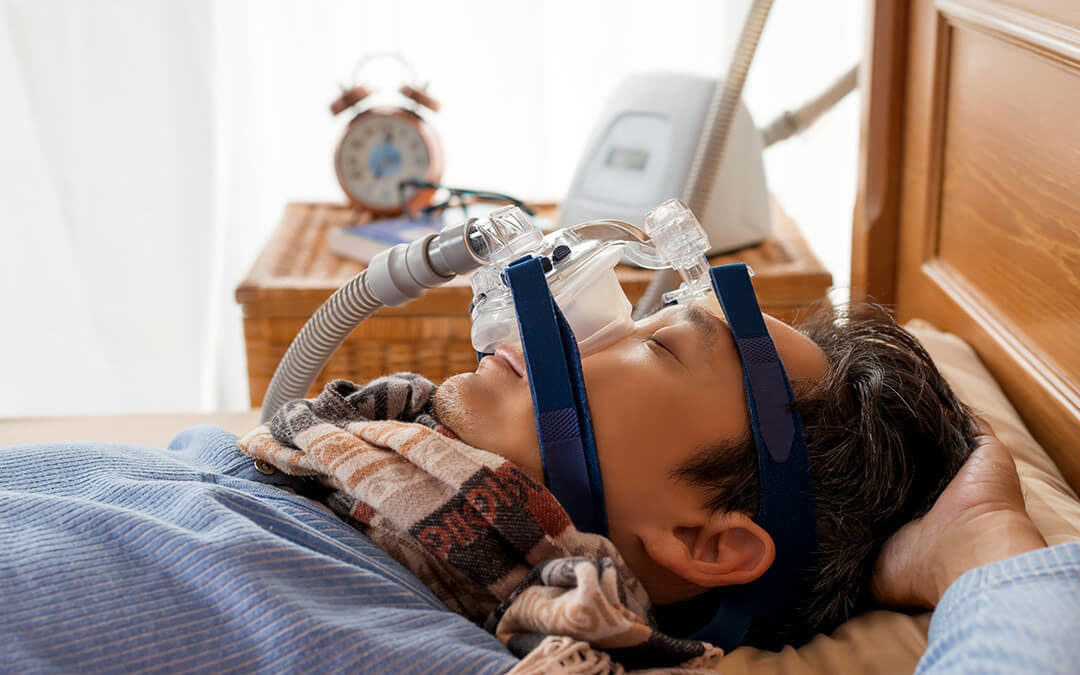An apnea is a pause in breathing that occurs when the tissue in the back of the throat collapses, blocking the airway. When we sleep, our upper airway muscles are relaxed, causing the airway to narrow. This limits the amount of air that reaches our lungs – and the resulting oxygen deprivation interrupts healthy sleep patterns. The sound of snoring is produced by airway constriction, which causes a vibration in the throat while we breathe. In cases of severe apnea, the airway obstruction produces a choking sound, and can even jolt the sleeper awake.
Apnea-induced snoring – and sleep interruption – can be treated by CPAP (continuous positive airway pressure) therapy. A CPAP machine is a small air compressor that sends a continuous flow of air through a long, flexible tube that attaches to a mask. The mask is worn while sleeping – over the nose or over both nose and mouth – as the compressor’s airflow splints open the airway, preventing collapse. Sleeping with the aid of a CPAP machine helps eliminate the breathing interruptions – and snoring – caused by obstructive sleep apnea.

Health Risks Of Sleep Apnea
Because oxygen deprivation affects the quality of our breathing, it also affects the quality of our sleeping. Breathing interruptions are averted by the airflow delivered by the CPAP machine – thus improving the quality of sleep for people with sleep apnea. In addition, a variety of heart conditions are linked to sleep apnea, due to the strain oxygen deprivation puts on the heart. By regulating breathing patterns during sleep, the CPAP machine helps prevent changes in blood pressure that can lead to heart failure.
CPAP therapy is prescribed by a doctor. After determining the severity of a patient’s obstructive sleep apnea, the doctor prescribes a fixed pressure setting for the CPAP machine – to be programmed by the CPAP machine supplier. Some CPAP machines feature a heated humidifier, to keep the airway from becoming too dry. The doctor determines whether a humidifier is a necessary component for the treatment plan.
Features Of The CPAP Machine
The CPAP machine – designed with a motor that pressurizes atmospheric air – is small enough to fit on a nightstand. The pressurized air is sent to a breathing mask, which is worn through the night (or during regular sleeping hours). The flowing stream of air keeps the upper airway unobstructed as the sleeper breathes in and out. When the machine is running, the airway does not collapse. When the flow of oxygen is not blocked by an obstructed airway, blood oxygen levels remain stable. As a result, sleep is more restful – and restorative.
The CPAP hose is long enough (six feet, typically) to reach from the machine to the mask, allowing for natural body movement during sleep – rolling from one side to the other, for example. An elbow adapter connected to the air outlet prevents the hose from kinking and cutting off airflow. The elbow adapter swivels, allowing the hose to move freely, without becoming tangled. Soft, stretchable headgear holds the mask in position, so that it doesn’t move while the wearer sleeps.

Sleeping With A Mask On
Patience is required for any lifestyle change – sleeping style included. Adjusting to CPAP therapy takes time. Use of a CPAP machine can cause nasal congestion, abdominal bloating, feelings of claustrophobia, and other forms of general discomfort. Also, if the mask is too loose, too big, or too small, air can leak out, diminishing the strength of the airflow. If the mask is too tight, the constriction can hinder the process of falling asleep.
Different types of masks or headgear will suit different cases of sleep apnea. Pressure setting adjustments may be needed as the sleeper establishes a regular practice of wearing the mask every night. When the right setting is found – and when regular therapy is practiced – CPAP machine users report better sleep quality, increased daytime alertness, and improved overall health.
Contact us to learn more about the CPAP equipment most commonly prescribed to treat obstructive sleep apnea.
